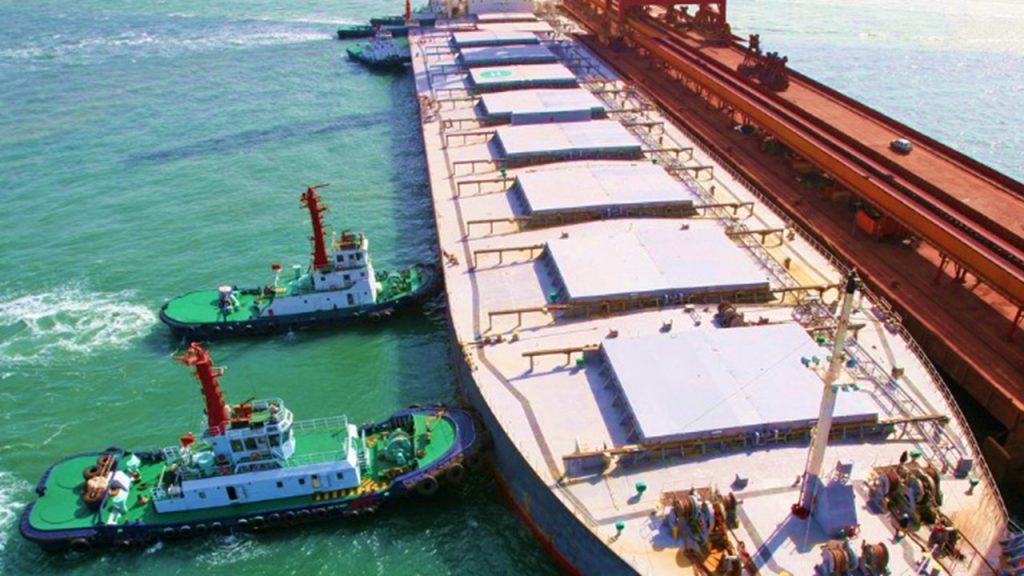Break-bulk, general cargo, breakbulk, or break bulk cargo handling in the Philippines is a crucial aspect of the global transportation and logistics industry. It involves the careful and systematic process of unloading, sorting, storing, and loading various types of goods that are not containerized or bulk shipped. From automobiles to machinery parts, break bulk cargo encompasses a wide range of products that require specialized handling techniques to ensure their safe delivery to their intended destinations.
Unlike containerized or bulk cargo, break bulk cargo comes in individual units or packages. This poses unique challenges for logistics professionals, as each item must be handled separately with the utmost care to prevent damage during transport. The process of break bulk cargo handling requires meticulous planning and coordination between various stakeholders, such as freight forwarders, port authorities, carriers, and warehouse operators.
Click here to read about our cost-effective break bulk cargo handling services for international and Filipino companies.
What Is Break Bulk Cargo Handling In The Philippines?
Break bulk cargo handling in the Philippines refers to the process of unloading, storing, and distributing goods that are not containerized. This type of cargo typically includes oversized or heavy items such as machinery, vehicles, and construction materials. The process begins with the arrival of the cargo at a port or terminal, where it is unloaded from ships using cranes or other specialized equipment.
Once unloaded, the cargo is carefully inspected for any damage before being stored in warehouses or designated storage areas. Break bulk cargo handling involves careful planning and coordination to ensure the efficient movement and distribution of goods. It requires skilled laborers who are trained in handling different types of cargo using appropriate equipment and techniques.
The main objective of break bulk cargo handling is to ensure that goods are delivered safely to their final destination without any damage or loss. It involves various stages such as customs clearance, documentation, loading onto trucks or other modes of transportation, and final delivery to the consignee. Break bulk cargo handling plays a crucial role in facilitating trade and commerce in the Philippines by enabling the transportation of diverse types of goods across different locations within the country.

Characteristics Of Break Bulk Cargo In The Philippines
Break bulk cargo refers to goods that are typically too large, heavy, or irregularly shaped to be containerized. In the Philippines, break bulk cargo handling is a crucial aspect of the logistics industry due to the country’s abundant natural resources and its role as a major trading hub in Southeast Asia. One characteristic of break bulk cargo in the Philippines is its diverse nature. It includes a wide range of commodities such as steel products, machinery, construction materials, vehicles, and even live animals.
Another characteristic of break bulk cargo in the Philippines is its reliance on specialized equipment and infrastructure for handling. Due to the size and weight of these goods, they require specific tools like cranes, forklifts, and ramps for loading and unloading from ships or trucks. Additionally, dedicated storage areas with adequate space are necessary to accommodate break bulk cargoes before they are transported further inland or distributed to their final destinations.
Moreover, break bulk cargo in the Philippines often involves complex documentation processes due to customs regulations and safety requirements. This includes securing permits and clearances from relevant government agencies prior to shipment arrival or departure. As a result, efficient coordination between various stakeholders, such as shippers, freight forwarders, customs brokers, and port authorities, becomes essential for smooth operations in handling break bulk cargoes.
Understanding the characteristics of break bulk cargo in the Philippines helps stakeholders involved in logistics planning and execution ensure effective management of these unique shipments throughout their journey from origin to destination.
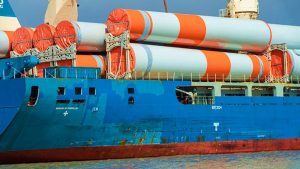
Importance Of Break Bulk Cargo Handling In The Philippines
Break bulk cargo handling is an essential aspect of the logistics industry, particularly for goods that cannot be transported in standard containers. This process involves the individual loading and unloading of goods onto a vessel rather than using containerized methods. One of the key reasons why break bulk cargo handling is important is because it allows for the transportation of oversized or heavy goods that cannot fit into standard containers. This includes items such as machinery, construction equipment, and large vehicles.
Moreover, break bulk cargo handling also enables greater flexibility in terms of transportation routes and modes. Unlike containerized cargo, break bulk shipments can be easily transferred between different types of transport, including ships, trucks, and trains. This versatility is crucial for industries such as Filipino oil and gas exploration or mining companies, where equipment needs to be transported to remote locations with limited infrastructure.
Break bulk cargo handling in the Philippines plays a vital role in facilitating the movement of oversized or heavy goods that cannot be transported using standard container methods. Its importance lies not only in its ability to handle unconventional cargo but also in providing flexibility in terms of transportation routes and modes. Without break bulk cargo handling capabilities, many industries would face significant challenges when it comes to transporting their specialized equipment efficiently and effectively.
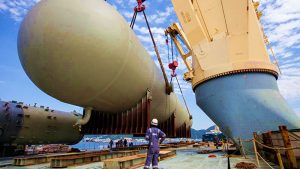
Steps Involved In Break Bulk Cargo Handling
Break bulk cargo handling involves several steps that ensure the efficient and safe transportation of goods. The first step in this process is the receipt of cargo at the port or warehouse. This involves verifying the quantity and condition of the goods, as well as creating a detailed inventory. Once received, the cargo is then sorted based on its destination and specific requirements.
The next step in break bulk cargo handling is the preparation for loading onto a vessel or other mode of transportation. This includes packaging, labeling, and securing the goods to prevent damage during transit. It also involves coordinating with various stakeholders, such as shipping lines, to schedule pick-up and delivery.
After preparation, the cargo is loaded onto vessels or other transport vehicles for transportation to its final destination. During this phase, it is crucial to ensure proper documentation and compliance with customs regulations. Finally, upon arrival at the destination port or warehouse, break bulk cargo must be carefully unloaded from transport vehicles using appropriate equipment, such as cranes or forklifts, before being stored or further distributed according to customer needs.

Sorting and Storing: Organizing the Cargo
The process of break bulk cargo handling in shipping involves sorting and storing the various types of cargo that are being transported. This is an essential step in ensuring that the goods are organized and can be easily accessed when needed. Sorting involves categorizing the different types of cargo based on their characteristics, such as size, weight, and fragility. This allows for efficient storage and retrieval later on.
Once the cargo has been sorted, it needs to be stored properly to ensure its safety during transportation. This may involve using different storage methods depending on the nature of the goods. For example, fragile or perishable items may require special handling and storage conditions to prevent damage or spoilage.
Efficient sorting and storage practices not only help to streamline operations but also minimize the risk of damage or loss during transportation. The proper organization ensures that each item is accounted for and can be easily located when needed. Additionally, it helps maximize space utilization within containers or warehouses by arranging items in a way that optimizes storage capacity.

Loading and Securing: Preparing for Transport
When it comes to loading and securing break bulk cargo for transport, there are several important steps that need to be followed. First, the cargo needs to be properly prepared for loading. This may involve packaging or crating the items to protect them from damage during transit. It is also crucial to ensure that all necessary documentation is in order before loading begins.
Once the cargo is ready, it can be loaded onto the shipping vessel. Depending on the size and weight of the items, specialized equipment such as cranes or forklifts may be used to lift and position the cargo onto the ship carefully. It is essential that this process be done with the utmost care to prevent any accidents or damage.
After loading, securing the cargo becomes a priority. This involves using various methods, such as lashing or stowing, to keep the items in place during transport. The goal is to minimize movement and shifting of the cargo, as this can lead to damage or even pose a safety risk. Properly securing break bulk cargo ensures its safe arrival at its destination while maintaining the overall stability of the shipping vessel.

Challenges Faced In Break Bulk Cargo Handling In The Philippines
One of the major challenges faced in break bulk cargo handling in the Philippines is the lack of proper infrastructure and equipment. Break bulk cargo, which consists of goods that are not containerized, requires specialized handling equipment such as cranes, forklifts, and conveyors. However, many ports and terminals in the Philippines do not have adequate infrastructure to handle this type of cargo efficiently. This leads to delays in loading and unloading operations, resulting in increased costs for both shippers and consignees.
Another challenge is the complex paperwork and documentation requirements involved in break bulk cargo handling. Each shipment requires a variety of documents, such as bills of lading, packing lists, commercial invoices, customs declarations, and certificates of origin. The process can be time-consuming and prone to errors if not properly managed. In addition, compliance with all relevant regulations and permits can be challenging due to the constantly changing rules and procedures imposed by different government agencies.
Moreover, ensuring proper security measures for break bulk cargo poses a significant challenge. Break bulk shipments in the Philippines often consist of high-value goods or sensitive materials that thieves or smugglers may target. Therefore, it is essential to implement robust security protocols at every stage of the handling process to prevent theft or tampering with the cargo. This involves thorough inspection procedures at entry points, strict access controls within port areas, surveillance systems monitoring activities 24/7, as well as trained security personnel on-site.
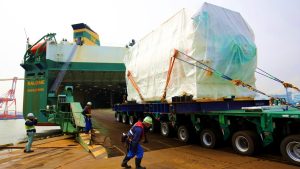
Technologies And Innovations In Break Bulk Cargo Handling In The Philippines
Break bulk cargo handling in shipping refers to the process of transporting goods that are not containerized. In the Philippines, advancements in technology have revolutionized this process, making it more efficient and cost-effective.
One significant innovation is the use of automated stacking cranes (ASCs) in break bulk cargo handling. ASCs can handle multiple containers simultaneously, reducing the time required for loading and unloading. These cranes also have advanced safety features and can be operated remotely, minimizing human error and ensuring smoother operations.
Another technological advancement in break bulk cargo handling is the implementation of Radio Frequency Identification (RFID) technology. This allows for real-time tracking of individual items within a shipment, improving inventory management and reducing losses due to theft or misplacement. RFID tags attached to each item provide accurate data on its location throughout the entire shipping process.
These technologies and innovations have significantly improved break bulk cargo handling in the Philippines by increasing efficiency, enhancing safety measures, and streamlining inventory management processes. As a result, businesses can now benefit from faster turnaround times, reduced costs, and better overall supply chain management.

Benefits Of Efficient Break Bulk Cargo Handling In The Philippines
Break bulk cargo handling refers to the process of unloading, sorting, and distributing individual items or smaller batches of goods that are not containerized. In the Philippines, efficient break bulk cargo handling offers several benefits for both businesses and the overall economy. Firstly, it allows for faster turnaround times as each item can be quickly unloaded and sorted individually, eliminating the need to wait for entire containers to be unpacked. This enhances supply chain efficiency and reduces lead times for businesses importing or exporting goods.
Moreover, efficient break bulk cargo handling in the Philippines enables better inventory management and reduced storage costs. By receiving goods in smaller quantities, businesses have greater control over their stock levels and can adapt quickly to changing market demands. Additionally, this method allows companies to avoid renting expensive warehouse spaces solely to store full containers until they can be unloaded. Instead, they can utilize existing storage facilities more efficiently by only taking up the necessary space required for break bulk shipments.
Overall, efficient break bulk cargo handling has a positive impact on trade in the Philippines by optimizing logistics operations and reducing costs for businesses involved in shipping activities. The ability to handle individual items or smaller batches of goods with speed and accuracy results in improved customer satisfaction through timely delivery of products while also boosting overall competitiveness within the global market.
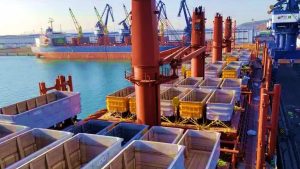
Are You Looking for a Break Bulk Cargo Handling Company in the Philippines?
Full Speed Chartering and Shipping Agency, Inc. is the answer to all your break bulk cargo handling needs in Luzon, Visayas, and Mindanao. With their commitment to providing quality and cost-effective rental LCTs, deck barges for hire, and tugboats for lease in the Philippines, they have become a trusted name in the industry. Whether you need to transport heavy machinery, oversized equipment, or other non-containerized items, we have the expertise and resources to handle it all.
- Email us: info@fullspeedchartering.com
- Call our 24-hour hotline: +63 939 375 3224
- Viber: +63 939 375 3224
- WhatsApp: +63 939 375 3224
- Facebook Messenger: Click here
- Click here to inquire
Our team of experienced professionals understands the complexities involved in break bulk cargo handling and ensures that every step of the process is executed with precision and care. From planning and coordination to loading and unloading, we take care of every detail to ensure a smooth and efficient operation. By choosing Full Speed Inc., you can rest assured that your cargo will be delivered on time and in perfect condition.
What sets Full Speed Chartering and Shipping Agency, Inc. apart from other break bulk cargo handling companies is their dedication to customer satisfaction. They go above and beyond to meet the unique needs and requirements of each client, providing personalized solutions that are tailored to their specific cargo. Whether it’s arranging for specialized equipment or coordinating with multiple parties involved in the transportation process, we are committed to delivering exceptional service every step of the way.
Additionally, Full Speed Chartering and Shipping Agency, Inc. understands that communication is key to ensuring a successful break bulk cargo handling operation in Luzon, Visayas, and Mindanao. That’s why we prioritize clear and efficient communication channels with their clients, actively listening to their concerns and providing timely updates on the status of their cargo. Full Speed Chartering and Shipping Agency, Inc. believes in transparency and keeps our clients informed about any challenges or potential delays that may arise during the handling process.
Furthermore, Full Speed Inc. recognizes that break bulk cargo handling requires meticulous planning and attention to detail. They have a team of experienced professionals who are well-versed in the intricacies of break bulk operations.
The Future Of Break Bulk Cargo Handling In The Philippines
Break bulk cargo handling in the Philippines is expected to undergo significant changes in the future. Currently, the process involves the manual loading and unloading of individual items from a ship onto trucks or other modes of transportation. However, with advancements in technology and automation, there is a growing demand for more efficient and streamlined methods.
One potential development is the use of specialized equipment such as cranes and forklifts that can handle break bulk cargo more efficiently. These machines can lift heavy items and transport them with greater ease, reducing labor costs and improving overall productivity. Additionally, advancements in tracking systems and data analytics will enable better monitoring of break bulk cargo during transit, ensuring its safety and security.
Furthermore, with the rise of e-commerce and global trade volumes expected to increase in the coming years, there may be a shift towards larger containerized shipments rather than break bulk cargo. This would require changes in infrastructure to accommodate larger vessels and increased capacity at ports. Ultimately, while break bulk cargo handling may become less common in the future due to these factors, it will still play a crucial role in certain industries, such as oil and gas or construction, where oversized or heavy loads are involved.
Summary: The Process of Break Bulk Cargo Handling in Philippines’ Shipping
Break bulk cargo handling in the Philippines is a crucial process in the shipping industry, involving the careful loading and unloading of individual pieces of cargo. This method is typically employed when the cargo cannot be easily transported in containers or when it needs to be protected from damage or contamination. The process begins with the arrival of the cargo at the Philippine port, where it is inspected and identified before being stored in a designated area.
Once all necessary customs documents are processed, break bulk cargoes are carefully loaded onto pallets or skids using specialized equipment such as forklifts or cranes. Each piece of cargo is secured tightly to prevent shifting during transit. When it comes time to unload, the same level of care and attention is given to ensure that no damage occurs during the process. Break bulk cargoes are usually unloaded directly onto trucks for further transportation or into warehouses for temporary storage.
Overall, break bulk cargo handling in Metro Manila, Cavite, Cebu, Davao, Central Visayas, Central Luzon, and the Caraga region requires meticulous planning and execution to ensure that each piece arrives safely at its destination without any harm or delay. While this method may be more time-consuming compared to containerized shipping, it remains an essential option for transporting certain types of goods around the world.

